Collembola of the Cavalum and Landeiro Caves (Madeira, Portugal)
- PMID: 37367341
- PMCID: PMC10299008
- DOI: 10.3390/insects14060525
Collembola of the Cavalum and Landeiro Caves (Madeira, Portugal)
Abstract
The cave fauna of the Macaronesian archipelagos is rich in endemic species. Unlike the Azores and the Canary Islands, the cave fauna of the Madeira archipelago is little known. The only two cave complexes studied, Machico and São Vicente, lack protection measures. São Vicente is seriously threatened because it is being exploited for touristic purposes, while the Machico complex, the only one in its natural state, is open to the public but without any control. The importance of the conservation of this cave fauna is indisputable. So far, of the 13 cavernicolous species recorded, two of them-genus Centromerus-are critically endangered. Apart from occasional sampling, no monitoring study has ever been carried out. The aim of this work has been to make a species checklist of the cave fauna of the Machico complex, the least studied so far. For this purpose, during 2001-2002, a monitoring study was carried out using traps and manual collections in the lava tubes of Landeiros and Cavalum (I, II, III). Fourteen species of springtails were recorded. Of these, four are new species, Neelus serratus Jordana & Baquero sp. nov., Coecobrya decemsetosa Jordana & Baquero sp. nov., Coecobrya octoseta Jordana & Baquero sp. nov., and Sinella duodecimoculata Jordana & Baquero sp. nov., and one is a new record for the archipelago, Lepidocyrtus curvicollis Bourlet, 1839.
Keywords: cave fauna; new species; springtails; volcanic cavities.
Conflict of interest statement
The authors declare no conflict of interest.
Figures
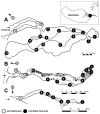


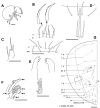

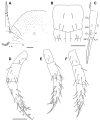

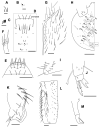
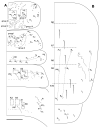

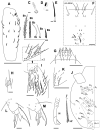
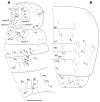




References
-
- Oromí P., Arechavaleta M., de la Cruz S., García R., Izquierdo I., López H., Zurita N. Animal diversity in the volcanic subterranean environment, with special emphasis on the Canary Islands. Boletín SEDECK. 2021;16:25–50.
-
- Naranjo M., López H., Martín S., Suárez D., Oromí P. Troglobiontes de Gran Canaria. Vida Bajo el Volcán (Troglobionts of Gran Canaria. Life Under the Volcano) Cam-PDS Editores SL; Las Palmas de Gran Canaria, Spain: 2019. pp. 1–106.
-
- Medina A.L., Oromí P. First data on the superficial underground compartment on La Gomera (Canary Islands) Mem. Biosp. 1990;17:87–91.
-
- Oromí P., Pérez A.J., Martín J.L., Martín N. La fauna Subterránea, Pobladora de un Hábitat Inhóspito. Legados del Fuego: Reservorios de una Asombrosa Biota y Refugios Ancestrales. Publicaciones del Ayuntamiento de La Orotava; Tenerife, Spain: 2018. pp. 82–131.
-
- Martín J.L., Izquierdo I., Oromí P. El género Loboptera en Canarias: Descripción de cinco nuevas especies hipogeas (Blattaria, Blattellidae) Vieraea. 1999;27:255–286.
LinkOut - more resources
Full Text Sources

